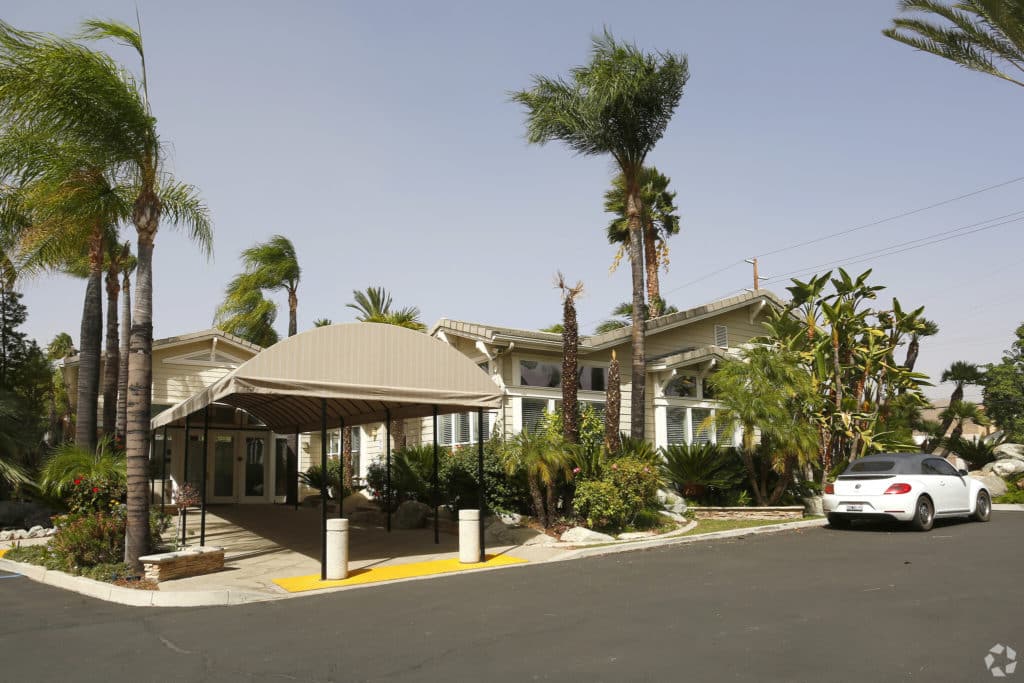What’s the difference Between a Mood Disorder Vs Personality Disorder?
Mood disorders vs Personality disorders can lead to too much pain in an individual’s life. In other words, mental health disorders fall into these two categories, but all can impact a person’s psychological, emotional, and cognitive well-being. Personality disorders and mood disorders can interfere with your ability to function. Your thoughts can become overwhelming and negatively impact the way that you view the world around you. Distorted thought patterns can lead to negative consequences and impact your ability to live a fulfilling life.
What is A Personality Disorder?
Is a type of mental disorder in which you have a hard and unhealthy pattern of thinking, functioning, and behaving. A person with a personality disorder has trouble perceiving and relating to situations and people. This causes serious problems and limitations in relationships, social activities, work, and school.
You may be extremely sad, empty, or irritable, or you may have periods of depression alternating with being excessively happy. Personality disorders usually begin in the teenage years or early adulthood. There are many types of personality disorders. Some types may become less obvious throughout middle age. Psychotherapy also called talk therapy, is one of the best personality disorder treatments and of course, Personality Disorder Treatment with specialists.

Common Signs & Symptoms of Personality Disorder
Like mood disorders, the signs and symptoms that can show if someone may be suffering from a personality disorder will be different depending on the type of personality disorder the individual is struggling with. Typically, personality disorders are grouped into three clusters based on similar characteristics and symptoms. Many people with one personality disorder also have signs and symptoms of at least one additional personality disorder. For a disorder to be diagnosed, it is not necessary to exhibit all the signs and symptoms listed, but it’s necessary to look for help and a Personality Disorder Treatment.
What is a Mood Disorder?
Mood disorders are about patterns in people’s emotions, however, personality disorders are more centered on the ways people relate to others. In conclusion, mood disorders can affect relationships, and personality disorders can affect mood. Mood and personality disorders are both categories of mental health conditions, but they differ from one another.
Common Signs & Symptoms of Mood Disorders
Some several signs and symptoms can indicate a person is suffering from a mood disorder. The specific signs and symptoms will vary depending on the type of mood disorder. the individual is suffering from, such as whether they are struggling with depression or are in a manic state as the result of bipolar disorder.
Some examples of mood disorder symptoms may include:
- Disruptive mood dysregulation disorder is a disorder of chronic, severe, and persistent irritability in children that often includes frequent temper outbursts that are inconsistent with the child’s developmental age.
- Depression related to medical illness is a persistent depressed mood and a significant loss of pleasure in most or all activities that are directly related to the physical effects of another medical condition.
- Depression induced by substance use or medication is a depression symptom that develops during or soon after substance use or withdrawal or after exposure to a medication.
- Major depressive disorder is prolonged and persistent periods of extreme sadness.
- Bipolar disorder is also called manic depression or bipolar affective disorder, depression that includes alternating times of depression and mania.
- Cyclothymic disorder is a disorder that causes emotional ups and downs that are less extreme than bipolar disorder.
- Premenstrual dysphoric disorder is a mood change and irritability that occurs during the premenstrual phase of a woman’s cycle and goes away with the onset of menses.
- Seasonal affective disorder is a form of depression most often associated with fewer hours of daylight in the far northern and southern latitudes from late fall to early spring.
- Persistent depressive disorder dysthymia is a long-term chronic form of depression.
How To Know If You Have Personality Disorder
‘Cluster A’ Personality Disorders
Cluster A is characterized by odd, and abnormal thinking or behavior. They include paranoid personality disorder, schizoid personality disorder, and schizotypal personality disorder.
- A person with antisocial personality disorder: behaves in a way that shows a disregard for the rights or needs of others. Features of antisocial personality disorder include:
- Perception of innocent remarks or non threatening situations as personal insults or attacks
- Angry or hostile reaction to perceived slights or insults
- Tendency to hold grudges
- People with schizoid personality disorder: also tend to be distant, detached, and indifferent to social relationships. Features of Schizoid personality disorder include:
- Little or no interest in having sex with another person
- Lack of interest in social or personal relationships, preferring to be alone
- Limited range of emotional expression
- A schizotypal personality disorder: is known as an eccentric personality disorder. Features of Schizotypal personality disorder include:
- Indifferent, inappropriate, or suspicious response to others
- Magical thinking
- Belief that certain casual incidents or events have hidden messages meant only for you
‘Cluster B’ Personality Disorders
Cluster B is characterized by dramatic, emotional behavior. They include antisocial personality disorder, borderline personality disorder, histrionic personality disorder, and narcissistic personality disorder.
- An antisocial personality disorder is a mental condition in which a person has a long-term pattern of manipulating, exploiting, or violating the rights of others without any remorse. Features of Antisocial personality disorder include:
- Aggressive, often violent behavior
- Disregard for the safety of self or others
- Impulsive behavior
- Borderline personality disorder also known as BPD is a mental illness. It includes self-image issues, difficulty managing emotions, and behavior. Features of borderline personality disorder include:
- Suicidal behavior or threats of self-injury
- Intense fear of being alone or abandoned
- Ongoing feelings of emptiness
- Histrionic personality disorder involves extreme emotionality and attention-seeking behavior. A person with this disorder may appear lively, enthusiastic, charming, and flirtatious. Features of histrionic personality disorder include:
- Easily influenced by others
- Shallow, rapidly changing emotions
- Excessive concern with physical appearance
- A person with narcissistic personality disorder tends to act as if they are superior to others, display patterns of grandiose behavior, have a need for admiration, and show a lack of empathy. Features of narcissistic personality disorder include:
- Expectation of constant praise and admiration
- Arrogance
- Envy of others or belief that others envy you
‘Cluster C’ Personality Disorders
Cluster C is characterized by fearful thinking, and behavior. They include avoidant personality disorder, dependent personality disorder, and obsessive-compulsive personality disorder.
- An avoidant personality disorder is characterized by feelings of extreme social inhibition, inadequacy, sensitivity, and rejection. Features of Avoidant personality disorder include:
- Socially inhibited, timid and isolated, avoiding new activities or meeting strangers
- Extreme shyness in social situations and personal relationships
- Fear of disapproval, embarrassment, or ridicule
- Dependent personality disorder (DPD) is a type of anxious personality disorder. Features of Dependent personality disorder include:
- Difficulty disagreeing with others, fearing disapproval
- Submissive or hold behavior toward others
- Obsessive-compulsive personality disorder is characterized by extreme perfectionism, order, and neatness. Features of Obsessive-compulsive personality disorder include:
- Inability to discard broken or worthless objects
- Rigid and stubborn
- Preoccupation with details, orderliness, and rules
How Common Are Mood Disorder vs Personality Disorder?
The National Institute of Mental Health (NIMH) [1] offers the following statistics on the prevalence of mood disorders among adults:
- Approximately 9.7% of adults in the United States had a type of mood disorder in the year prior to the study.
- Women suffer from mood disorders at a much higher rate (11.6%) than men do (7.7%).
- Approximately 21.4% of adults in the United States will experience some type of mood disorder during their lifetime.
In adolescents, NIMH provides the following mood disorder statistics:
- An estimated 14.3% of adolescents have a type of mood disorder.
- Approximately 11.2% of adolescents who have a mood disorder suffer from severe impairment as a result.
- Adolescent females struggle with mood disorders at a higher rate than male adolescents do, 18.3% compared to 10.5%.
In addition, NIMH also offers statistics regarding the number of people who suffer from personality disorders.
According to the National Comorbidity Study Replication, 9.1% of adults in the United States have some form of personality disorder. In addition, researchers believe that personality disorders may develop during the teen years. However, adolescents typically are not diagnosed with a personality disorder until adulthood.
Effects of Mood Disorder vs Personality Disorder
When someone is suffering from a mood disorder or the symptoms of a personality disorder, they must receive treatment. If they do not, they are at risk for experiencing a few negative effects, including:
- Inability to develop and maintain healthy relationships
- Inability to succeed in school or at work
- Abuse of drugs or alcohol
- Suicide attempts
- Experiencing symptoms of other mental health concerns
- Low sense of self-worth
- Suicidal ideation
Choosing a Mood Disorder vs Personality Disorder Treatment Center
Everyone’s experience with mood disorders and personality disorders is different. Because of that, the way an individual responds to treatment will also be different. It is important to find a mood disorder treatment center or personality disorder treatment center that individualizes treatment based solely on your needs.
Our residential program offers patients round-the-clock treatment in a safe and welcoming environment. We use a trauma-informed approach to treatment that is tailored precisely for individuals suffering from mental disorders.
Most importantly, to find out more about each level of care, or to discuss which option may be best for you, please feel free to contact We Level Up at any time.

Types of Mood Disorder Vs Personality Disorder Treatment & Therapies
Our treatment center develops individualized treatment plans that will best address your specific needs. The therapies below are commonly used and may include:
- Acceptance and commitment therapy
- Dialectical behavior therapy
- Motivational interviewing
- Cognitive behavioral therapy
- Group, individual, and family therapy sessions
- Experiential therapies
Starting the Mood Disorder vs Personality Disorder Treatment Process
To begin mood disorder treatment or personality disorder treatment, you can simply call We Level Up at your convenience. Our treatment center will have a thorough review to determine the program that is best for you. A general overview of the steps you can expect to take at the start of the treatment process includes:
- Completing an assessment over the phone
- Learning about our admissions process
- Arriving at our treatment center and meeting our staff and other residents
- Becoming familiar with our treatment center’s environment
- Completing medical and psychological evaluations
- Working with a team member to create an individualized mood disorder treatment plan or personality disorder treatment plan
- Beginning treatment
Reclaim your life from a Mood Disorder or a Personality Disorder
Mood Disorders vs Personality Disorders can cause major health, social, and even economic problems that should not be taken lightly. We Level Up Treatment Center can provide you, or someone you love, the tools to recover from this with professional and safe treatment. Feel free to call us to speak with one of our counselors. We can inform you about this condition by giving you relevant information about the difference between Mood Disorder vs Personality Disorder. Our specialists know what you are going through. Please know that each call is private and confidential.





